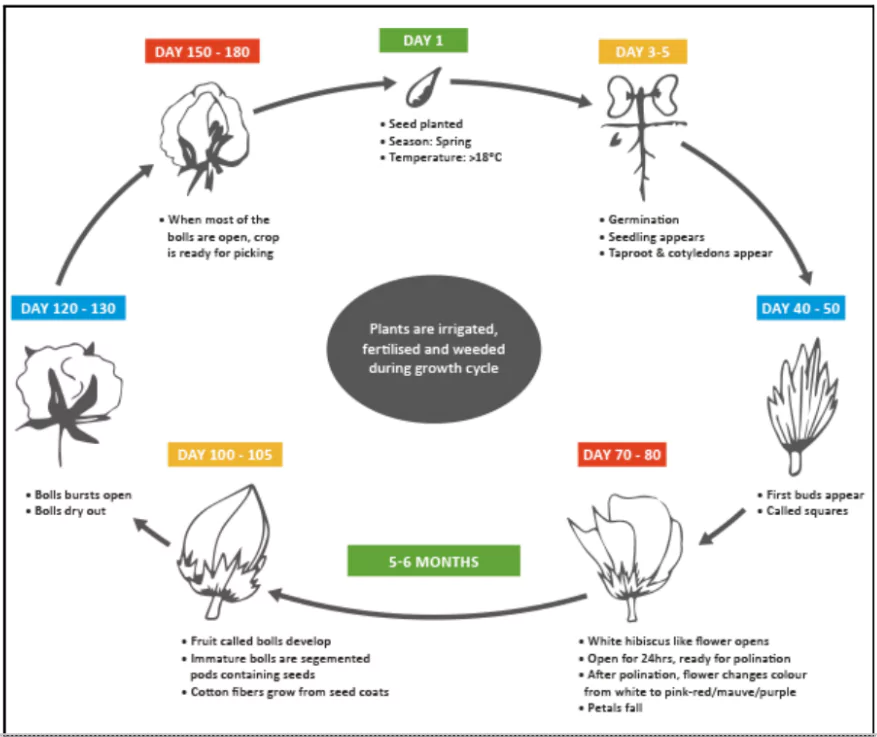India’s imports of Supima cotton, an extra-long staple (ELS) cotton exported by the U.S., have been rising following the removal of import duty on ELS cotton earlier this year.
- Previously, an 11% import duty on cotton was imposed in the 2021-2022 Union Budget.
Extra Long Staple (ELS) cotton
- ELS cotton refers to cotton fibers with a length exceeding 1 3/8 inches or 34.925 mm.
- This makes it significantly longer than regular cotton fibers.
- ELS cotton is prized for its exceptional softness, strength, and uniformity, leading to superior fabric quality.
- It’s commonly used in high-end textiles like luxury apparel, fine linens, and medical products.
|
Enroll now for UPSC Online Course
Key Highlights on the rise in Import
- Demand vs. Shortage: India imports 60,000–2,00,000 bales of Supima cotton annually to address a shortage of ELS cotton domestically.
- Global Pricing Pressure: U.S. Pima cotton farmers are facing challenges breaking even, potentially leading to higher prices to sustain cultivation.
- Competing Supplies: While U.S. cotton exports to India grew, its market share declined due to increased imports from Australia, Brazil, and West Africa.
About Cotton Cultivation (White-Gold)

- Tropical Crop: Cotton is a tropical crop grown during the kharif season in semi-arid regions of India.
- Temperature and Rainfall: The crop thrives in temperatures ranging between 21°C and 30°C and requires annual rainfall of 50–75 cm.
- Soil Types: Cotton grows in diverse soils:
- Well-drained deep alluvial soils in northern India.
- Variable-depth black clayey soils in central India.
- Mixed black and red soils in the southern regions.
- Sensitivity: While cotton exhibits some tolerance to salinity, it is highly sensitive to waterlogging, necessitating well-drained soils.
- Climate Requirements:
- Clear skies are essential during the flowering stage.
- Cotton requires approximately 210 frost-free days and grows well in mineral-rich black lava soil (regur soil).
India’s Position in Cotton Production
- Global Production: India is the second-largest producer of cotton globally, with an estimated production of 323.11 lakh bales in the 2023-24 season, accounting for 23.83% of the world’s cotton production ( 1429 lakh bales).
- Area Under Cultivation: India ranks first globally in the area under cotton cultivation, contributing 39% of the world’s total cotton area of 318.8 lakh hectares.
- Irrigated vs Rain-fed Areas: Around 67% of India’s cotton is grown in rain-fed areas, while 33% is cultivated in irrigated regions.
Check Out UPSC NCERT Textbooks From PW Store
| State |
2020-21 (in Lakh Bales) |
2021-22 (in Lakh Bales) |
2022-23 (P) (in Lakh Bales) |
| Maharashtra |
101.05 |
71.18 |
80.25 |
| Gujarat |
72.18 |
74.82 |
91.83 |
| Telangana |
57.97 |
60.67 |
53.25 |
| Rajasthan |
32.07 |
24.81 |
27.12 |
| Karnataka |
23.20 |
19.50 |
21.04 |
Major Cotton-Producing Zones and States in India
- Largest Producing Zone (2022-23): The Central Zone, comprising Gujarat, Maharashtra, and Madhya Pradesh, is the largest cotton-producing zone in India.
- Top Producing States: Gujarat is the largest producer of cotton, followed by Maharashtra and Telangana.
- Zones for Cotton Cultivation:
-
- Northern Zone: Punjab, Haryana, and Rajasthan.
- Central Zone: Gujarat, Maharashtra, and Madhya Pradesh.
- Southern Zone: Telangana, Andhra Pradesh, and Karnataka.
- Cotton is also cultivated in Odisha and Tamil Nadu.
Types Of Cotton Produced in India:
- India is unique in cultivating all four cotton species.
| Type |
Native to |
Feature |
| Gossypium arboreum |
India & Pakistan |
Tree cotton, shorter staple, coarse fiber |
| Gossypium herbaceum |
India, Southern Africa & Arabian Peninsula |
Levant cotton, shorter staple, coarse fiber |
| Gossypium hirsutum |
Central America, Mexico |
Upland cotton, most widely cultivated, 90% of Indian production, basis for Bt cotton |
| Gossypium barbadense |
Tropical South America |
Extra-long staple (ELS), high quality, Pima cotton, used for luxury textiles |
Enroll now for UPSC Online Classes
Initiatives of Central Government to Boost Cotton Production
- PM MITRA: Pradhan Mantri Mega Integrated Textile Region and Apparel scheme aims to develop world-class textile parks with plug-and-play facilities.
- PLI Scheme: Production Linked Incentive scheme to boost domestic manufacturing of textiles and apparel.
- Kasturi Cotton Bharat: Promotes sustainable cotton cultivation practices, focusing on reducing water and pesticide usage.
- National Technical Textile Mission (NTTM): Encourages the development and production of high-performance technical textiles.
- Amended Technology Upgradation Fund Scheme (ATUFS): Provides financial assistance for technology upgrades in the textile sector.
![]() 16 Dec 2024
16 Dec 2024


